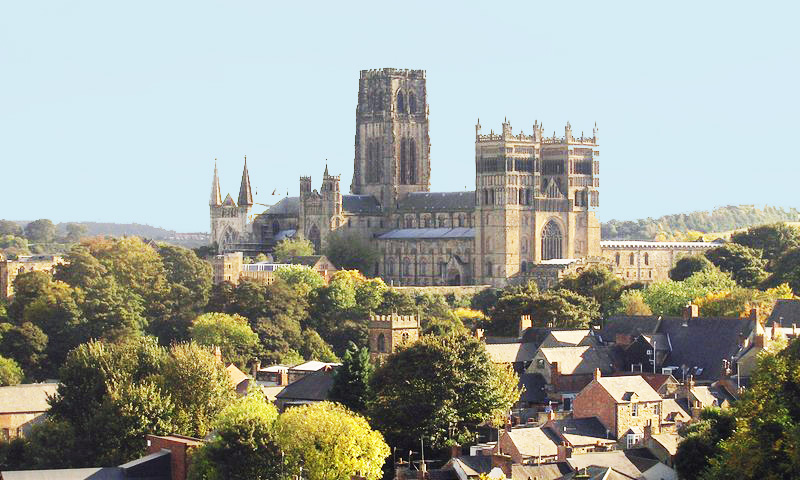
Durham Cathedral
Durham Castle and Durham Cathedral sit side-by-side on a peninsula off the River Wear that looks tailor-made for these sandstone landmarks. From this fortified spot, the new Norman rulers could ward off Scottish incursions and display their Church+State superiority against Northumbrian rebels brutally and spitefully suppressed in what became known as ‘The Harrying of the North’.
The Cathedral, in particular, would have been a stupendous sight for approaching aggressors, but it also served to draw awestruck adoration from Christian pilgrims. Completed in 1133, it measures 216ft high, making it Britain’s tallest building for a while. With its side extensions it had enough space for monks, multiple altars, copies of the 1216, 1225 and 1300 versions of Magna Carta and the shrines of the Venerable Bede and of St. Cuthbert (c.635-87), whose body eventually arrived after having left Lindisfarne many years before. Bearing a reputation for miracles, Cuthbert’s relics were a lucrative attraction.
Although most of its treasures were confiscated in the Reformation, the Cathedral’s architecture remains untouched and is a testament to the skill of hundreds of stonemasons who worked on creating its ribbed vaulting and Romanesque ornate columns. Uniquely, its bishops were called ‘prince-bishops’ until 1836 and had as much power as a monarch.
(Image: Andrew Tryon at geograph.org.uk / CC BY-SA 2.0)
